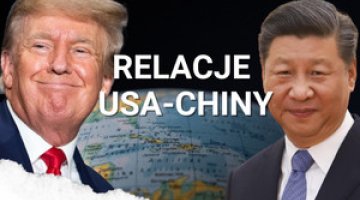Iran: a high price for surviving the 12-day war
On 24 June, a ceasefire in the Israel-Iranian war, which involved direct US military engagement, came into effect. The ceasefire was imposed by President Donald Trump. The twelve-day conflict marked the greatest defeat in the history of the Islamic Republic of Iran, exposing its military weaknesses and undermining many of its core strategic political assumptions. However, Iran did manage to prevent Israel from achieving its main objectives: the complete dismantling of its nuclear programme and the collapse of the regime. It also retained the capability to strike enemy targets. The current ceasefire does not guarantee a permanent end to hostilities or a political resolution of the conflict. How events unfold will largely depend on the stance of the United States – specifically, its ability to enforce the ceasefire, its vision for resolving the conflict, and Iran’s willingness to compromise.
The war, its military and political consequences, and the magnitude of destruction will serve as a catalyst for profound shifts and internal tensions in Iran. These will undoubtedly affect the ruling elite and influence the political system. Managing the economic and social consequences of the conflict will present a serious challenge. Israel will continue to stoke tensions. Although the Israeli programme of ‘regime change’ is unrealistic, the potential for internal destabilisation in Iran over the coming weeks and months appears to be high.
The Israeli-Iranian war with US participation
The Israeli attacks on Iran, launched on 13 June, marked a new phase in the strategic conflict between the two countries that has persisted for four decades. From Israel’s perspective, Iran is its most serious rival and threat, due to its nuclear programme, pursued in defiance of international commitments (with Israel accusing Tehran of conducting advanced military work ), its creation and support of anti-Israeli terrorist forces in the region (mainly Hezbollah), and, more broadly, its ambitions for regional dominance at the expense of states such as Israel.
Israel’s openly stated objective remains the permanent neutralisation of Iran’s regional influence – preferably, the destruction of its political system and the elevation of Israel to the position of dominant security actor in the region. The attacks were the result of a significant improvement in Israel’s strategic position, due in part to the weakening or elimination of Iranian influence in Lebanon and Syria, which reduced Iran’s capacity for asymmetric retaliation. Another factor that facilitated the attacks was the damage inflicted on Iran’s air defence systems during airstrikes in October 2024. The decision to launch the attack was also influenced by concerns over bilateral negotiations between the United States and Iran, ongoing since March under pressure from the Trump administration, which could potentially lead to a normalisation of relations.
The Israeli attacks were exceptionally wide-ranging and intense. During the 12-day conflict, using air power, missile strikes, and sabotage operations, Israel eliminated Iran’s air defences, destroyed its air force and a significant portion of its logistical infrastructure, along with a large share of its arsenals, production facilities, and missile launchers. Targets linked to Iran’s nuclear programme were hit repeatedly, although it cannot be definitively stated that the strikes were fully effective. A significant aspect of the offensive was the elimination of at least a dozen key figures involved in Iran’s nuclear programme, as well as several dozen commanders of the Islamic Revolutionary Guard Corps (IRGC) and the regular army.
In addition, Israel carried out a series of attacks on economic infrastructure, including gas fields, refineries, fuel depots, and industrial facilities. Institutions linked to internal security were also targeted. These included local units and command centres of the IRGC and forces responsible for suppressing protests, as well as Evin Prison in Tehran, a symbol of the regime’s repression. Furthermore, operations were deliberately conducted to incite public panic, such as strikes on state television and radio, as well as water and electricity infrastructure.
The full extent of Iran’s losses is difficult to assess. The information released by both sides forms part of an ongoing information war, with no independent sources available. The estimated number of fatalities is approximately 800, including over 200 military personnel. Iran’s offensive military capability is assumed to have been significantly reduced, though not eliminated, as indicated by the continued missile attacks on Israel. The openly declared objective remains the dismantling of Iran’s state structures and the instigation of grassroots protests leading to state collapse and regime change, accompanied, among other developments, by increased activity from opposition groups in exile.
Iran’s response to the attacks was limited to regular missile and drone strikes on targets in Israel. Despite Israel’s effective air defence system, the attacks caused damage – difficult to assess due to censorship – to economic infrastructure (including the refinery in Haifa), military facilities, and civilian areas, with approximately 30 fatalities reported. From a military standpoint, Israel’s military potential was not compromised, although it is being strained by rising operational costs.
The US air and missile strikes on Iran’s nuclear infrastructure at Natanz, Fordo, and Isfahan, carried out on 22 June, were a key element of the conflict. While the effects of these strikes were undoubtedly significant, they have not been independently verified. Iran’s response involved a rocket attack on the US Al Udeid Air Base in Qatar. Iran provided informal advance warning of the strike, and its military impact was limited. Several hours later, President Trump announced a ceasefire, though without providing any details regarding its terms.
The Israeli attacks exposed the weakness of Iran’s defence system – most notably its effective loss of control over its own airspace – and its inability to mount a conventional military response, let alone engage in a full-scale confrontation with the United States. In the current conflict, Iran remains practically isolated on the international stage. While numerous expressions of condemnation – particularly from countries in the Middle East and the Global South – have been voiced against the Israeli (and US) actions, they have not translated into tangible support for Iran, including military assistance.
The twelve-day war exposed the limitations of Iran’s deterrence mechanisms. In particular, Iran’s enormous investments in its nuclear programme – which was intended to guarantee protection against external aggression – now appear questionable. At this stage, Iran’s asymmetric deterrence capacity has likewise proven ineffective. The threat of mobilising Iran’s non-state proxies in the region or launching attacks on US interests – such as military bases, the critical infrastructure of Gulf allies, or trade routes in the Strait of Hormuz – as well as the widely speculated possibility of terrorist attacks, none of which materialised, failed to deter the strike.
Iran’s internal resilience and the stability of its political system remain the key concerns. Contrary to Israeli declarations, actions, and Western media speculation, Iran has, for now, retained internal control, is efficiently replenishing personnel losses at the highest echelons, and appears to exhibit an unprecedented level of unity between the government and the public in recent decades, both having been affected by external aggression (although it should be remembered that an information blockade remains in place). However, the conflict is unfolding against the backdrop of a deep internal crisis and is significantly exacerbating existing tensions. Iran is grappling with a range of economic difficulties, primarily resulting from years of sanctions and inefficient governance.
Iran’s persistent problems include the consistently declining GDP growth rate in recent years (estimated at 1% in 2025), high inflation, and the inefficiency of an underfunded economy. Growing public dissatisfaction, driven by declining living standards and demands for liberalisation of the system, represent another major challenge. Tensions are also visible within the elite, including over potential reforms to the political system and questions of succession (Iran’s Supreme Leader, Ali Khamenei, who has held power since 1989, is now 86 years old). The war with Israel has intensified these challenges, prompting both the elite and the public to question the costs and effectiveness of current policies. It has also undermined confidence in the system’s resilience – particularly given the apparent penetration of Iran’s security structures by Israeli intelligence – and likely exacerbated tensions surrounding both forced and anticipated personnel reshuffles.
At present, it is difficult to assess the losses sustained by Iran’s national and local security apparatus, as well as the population’s resilience to continued conflict and its economic toll. It is unclear whether Israel will be able to effectively take advantage of centrifugal or anti-establishment forces within Iran to destabilise the state. On the one hand, this could involve groups such as the Kurds – with whom Israel is known to cooperate – and potentially the Baloch or Azeri populations; on the other, it may include radical political opposition movements such as the People’s Mojahedin Organisation of Iran (MKO/MEK).
Outlook
Iran is – and will likely remain – reactive towards Israel and the United States, the aggressors who, despite short-term successes, failed to achieve a decisive victory, most notably the permanent dismantling of Iran’s nuclear programme. It is likely that, in the near future, Tehran will seek to continue its current policy: responding to Israeli attacks when necessary while avoiding direct confrontation with the United States and regional states. A political breakthrough in relations with the US depends on a nuclear agreement, which, from Iran’s perspective, should include security guarantees (i.e. credible deterrence against Israel) and the lifting of sanctions. A scenario involving more aggressive Iranian actions targeting US bases or broader regional interests appears likely only in the event of the emergence of an existential threat to Iran’s political system or – less plausibly – a major escalation of internal power struggles within the ruling elite.
With the onset of war, Iran has entered what may prove to be a decisive period of shifts that have been brewing for at least a decade. Within the ruling camp, a pressing issue is the adaptation of the country’s security strategy and domestic policy to new realities. In a broader context, the challenge lies in organising the succession process, which involves both personnel changes and systemic adjustments. Any successor to Khamenei will inevitably possess less authority, necessitating institutional restructuring, with nationalistic legitimacy likely to outweigh religious authority. The process of accountability and power shifts within the elite may prove turbulent and susceptible to external developments and socio-economic pressure. At present, it is impossible to predict whether this process will be dominated by those advocating consolidation of the apparatus and a hardening of policy, or whether there will be attempts to selectively liberalise the system.
Maintaining internal stability is the key issue for Iran. The regime change agenda advocated by Israel and certain groups in the US was unrealistic. Iran has no organised political opposition, while exiled opposition groups appear alienated and lacking real political instruments (such as those centred around the crown prince exiled in 1979) or are extremely unpopular within Iran (such as those linked to the MKO/MEK). Opposition groups with a strong ethnic profile, such as Kurdish movements, may exert influence, but only at the local level.
A persistent challenge for Iran remains the high potential for social unrest fuelled by socio-economic and political grievances. Against a backdrop of dwindling hope for improvement, rising tensions within the elite, and Israel’s demonstrated intentions and capabilities – demonstrated during the war – to penetrate and destabilise the country, the risk of upheaval threatening the system is increasing.
APPENDIX
The stance of selected states towards US attacks on Iran
The United Kingdom supported the US actions aimed at neutralising the threat posed by Iran’s nuclear programme. At the same time, London – while calling for de-escalation and negotiations – emphasised that it had not taken part in the US operation or in Israel’s earlier strikes (although the US air force increased its use of British air bases in the days preceding the 22 June attack).
Germany: Chancellor Friedrich Merz expressed support for US actions against Iran’s nuclear programme, while also emphasising the need to resolve the conflict through diplomatic means. The authorities in Berlin have voiced dissatisfaction at the lack of European influence over developments surrounding Iran. The German government is chiefly concerned about the consequences of an escalation of the conflict for the Federal Republic, including potential attacks on Israeli sites located in Germany and a new wave of refugees from the Middle East.
France: President Emmanuel Macron described the US strike on Iran as a violation of international law, while also acknowledging that France supports the objective of preventing Iran from acquiring nuclear weapons. Paris advocates a diplomatic resolution to the conflict and is sceptical about the notion of regime change in Iran through airstrikes. Like Germany, France is concerned about the marginalisation of Europe, which has effectively been deprived of influence over events in the Middle East.
Turkey: On 22 June, the Turkish Ministry of Foreign Affairs issued a statement expressing deep concern over the US attacks on Iranian nuclear facilities, describing them as actions contributing to further destabilisation of the Middle East. Ankara called for an immediate halt to military operations and the resumption of dialogue, and declared its readiness to support such initiatives.
China strongly condemned the US airstrikes, describing them as a “serious violation of international law”. At the same time, Beijing offered to mediate and, on 22 June – together with Russia and Pakistan – proposed a UN Security Council resolution calling for an immediate ceasefire to prevent further escalation. With limited room for manoeuvre, China will focus on projecting itself as a voice of reason and an advocate for a diplomatic resolution to both the current crisis and the issue of Iran’s nuclear programme. Above all, it will concentrate on providing Iran with political support, leveraging its influence among countries of the Global South.





